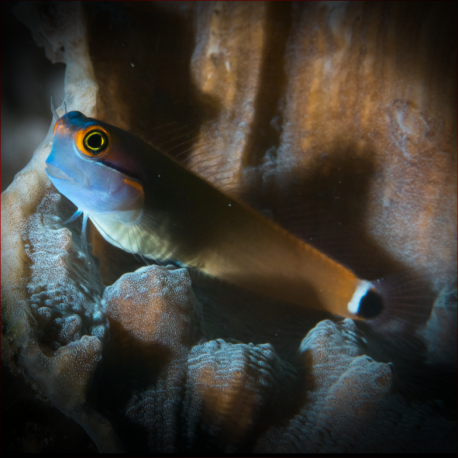More info
Datasheet
| Minimum Tank Size | 200 litres / 52.83 US gallons |
| Maximum Size | 6.0cm / 2.36inches |
| Reef Compatible | Often reef safe |
| Temperament | Docile but might be aggressive towards similar species |
| Temperature | 22.2°C / 71.96°F - 25.6°C / 78.08°F |
| Specific Gravity | 1.020-1.025 |
| Carbonate Hardness | 8-12 |
| pH | 8.1-8.4 |
General Description
The Tailspot coralblenny, scientifically known as Ecsenius stigmatura, belongs to the Blenniidae family. These fish are characterized by their oblong shape, long dorsal fin, and small "legs" that help them move around the aquarium. They are native to the Western Pacific, specifically found in the Philippines and Indonesia.
Aquarium Suitability
Tailspot coralblennies are popular choices for aquariums due to their ease of care and adaptability in various tank sizes. They are considered suitable for most aquarium setups and are known to thrive in well-established tanks with ample hiding places and live rocks.
Care and Hardiness
This species is considered hardy and docile, making them suitable for both beginner and experienced aquarists. They have a fun and interesting personality but may show aggression towards similar species. Tailspot coralblennies prefer to be the sole representative of their kind in the tank.
Reef Suitability
Tailspot coralblennies are often deemed reef-safe, making them compatible for reef aquariums. They tend to coexist peacefully with corals and other reef inhabitants.
Aquarium Setup
To cater to the needs of Tailspot coralblennies, it is recommended to provide a well-established aquarium with ample algae growth on rocks and stones for grazing. They require a minimum tank size of 200 liters, good water flow, and hiding spots between live rocks.
Behaviour
These blennies are known to be shy and docile, so it is essential to house them with non-aggressive tank mates. They may exhibit territorial behavior and should be monitored when introduced to other fish.
Feeding and Diet
Tailspot coralblennies primarily feed on algae-based foods such as plant-based flakes, Nori seaweed, and Spirulina. They also enjoy a varied diet of macroalgae, microalgae, small crustaceans, and zooplankton.
Dimorphism and Captive Reproduction
There is no specific information available regarding dimorphism or captive reproduction of Tailspot coralblennies.
Habitat and Distribution
These fish can be found in the waters of Indonesia and the Philippines in the Western Pacific region. They prefer habitats with ample algae growth for grazing and hiding spots among rocks and crevices.

